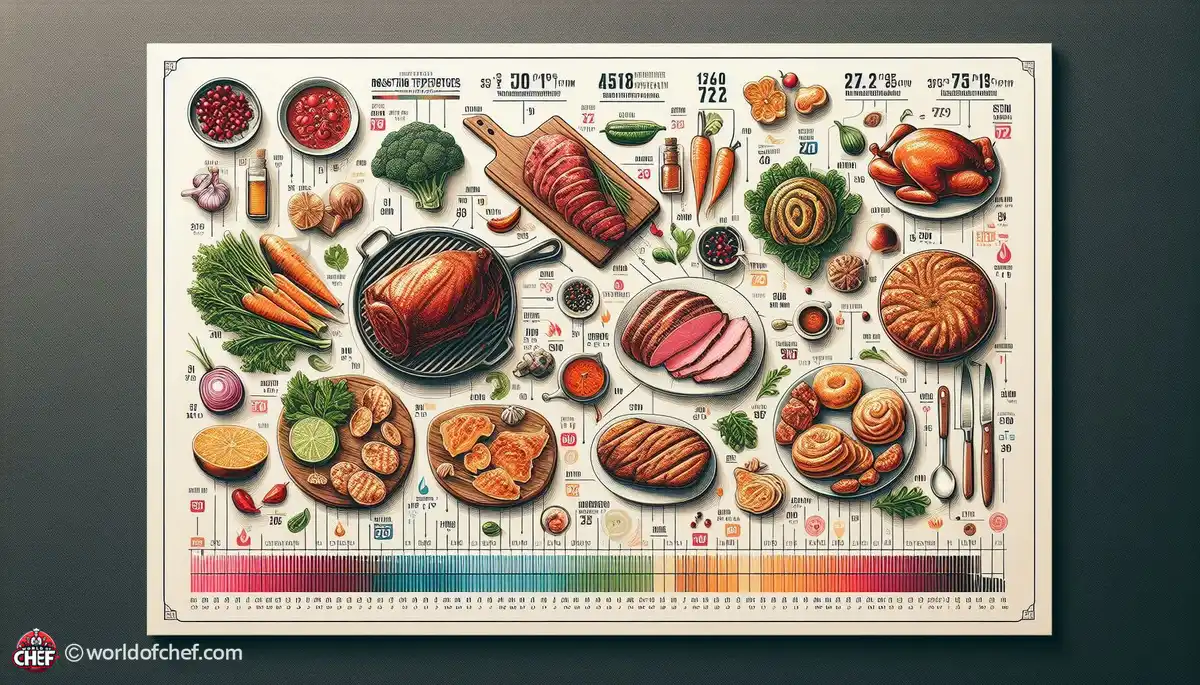
Simmering with Spices: Infusing Flavor into Your Dishes
Emery Donley - Oct 8, 2024 - 8 min read


The right principles followed will elevate roasting into an art form and enhance the ingredients' flavor to new heights. Roasting, in my opinion, does not seem that simple, getting something into the oven, setting the cooking time, and letting it finish. Cooking food at suitable temperatures might be one of the significant keys to getting the ideal roast. Here we go with this very comprehensive guide on roasting temperatures, from the science involved with temperature selection to how-to suggestions for achieving perfect results in your kitchen.
Temperature plays an enormous role in roasting since it affects the food at every level: from the texture and moisture content through flavor and appearance. The understanding of the effects of temperature on the factors listed above will master the roasting process. When food is subjected to heat, a variety of chemical changes occur, altering its flavor and texture. For instance, between the amino acids and the reducing sugars, the Maillard reaction creates that golden-brown crust characteristic of well-roasted foods.
It is of paramount importance to maintain the level of temperature when roasting so as to achieve proper results. This may imply that part of the cooked food would be overdone, and the other portions not so done. One can use an accurate thermometer to read the temperature as they check the food inside the oven. Other variables, which include size and thickness of foodstuff and size of the oven, can make a difference in the variation of cooking times and temperatures.
Choosing the perfect temperature for roasting is not that difficult; it would depend on various factors that include the nature of food and the outcome to be expected. In general, foods that should be cooked slowly and gently over a lower temperature are tougher cuts of meat or root vegetables. Foods that are to be cooked quickly and browned, such as poultry or delicate vegetables, should be cooked at higher temperatures. The temperature and cooking time can be experimented with to achieve the perfect consistency for those favorite recipes.
This is one of the most common mistakes that home cooks make when roasting, not preheating the oven. Preheating the oven ensures that the oven reaches the temperature wanted before the food goes into it, thus providing uniform cooking. The time spent in preheating ranges from 10 to 30 minutes, depending on the type of oven used and the temperature required. Ensuring that the oven follows the manufacturer's guidelines when preheating will bring about the best results.
To end, other important issues which would contribute to balanced roasting are the using of a roasting rack, holding food above a pan. Since air must penetrate the meat, keeping bottom parts moist and makes its sides well brown on each side. If you don't have a roasting rack, you can fashion one by placing a wire cooling rack inside a roasting pan.
After you have roasted your food to perfection, it's worth letting it rest before you carve or serve. When you let the food rest, its juices are given time to redistribute in it, which makes the meat juicier and fuller of flavor. Moreover, resting serves to have the leftover warmness completely cook the rest of the food. Such that in the end the food won't under cook or partly raw, but simply cooked right. For instance, the general rule stipulates cuts of meat has to be left for sometime before cutting. In case of large cuts may stay longer.
The art of low and slow roasting refers to the cooking of food at relatively low temperatures for a very long time, which gives tender, juicy, and flavorful dishes. Low and slow roasting is great for tougher cuts of meat, such as brisket or pork shoulder, since they should take quite a lot of long slow cooking to break down those tough connective tissues and develop rich flavors. For the best performance, food requires a low oven temperature typically between 225°F to 275°F and longer cooking time.
For high-temperature roasting, food is cooked on a higher temperature for less time. This results in crisp, caramelized exteriors and juicy, tender interiors. This is particularly useful for food items that are to be cooked and browned quickly. Examples of such food products include chicken, fish, and vegetables. For excellent results, the oven reaches a very high temperature that is normally between 400°F and 450°F. The food is then roasted to the right cooked state while being careful not to overcook.
It is often used in cooking thick cuts of meat to tenderize the inside with crispy caramelized crust at the outside. In reverse searing, the meat is roasted to the desired level of doneness in a low oven and then briefly seared in a hot skillet or grill to crisp the skin and develop its flavor, as opposed to traditional searing, in which the meat is briefly seared over high heat and then completed in an oven. This kind of process ensures complete control while cooking and ensures well-cooked meat each time.

Emery Donley - Oct 8, 2024 - 8 min read

Russell Comeaux - Oct 8, 2024 - 8 min read

Walter Backus - Oct 7, 2024 - 8 min read

Samantha Thames - Oct 7, 2024 - 6 min read